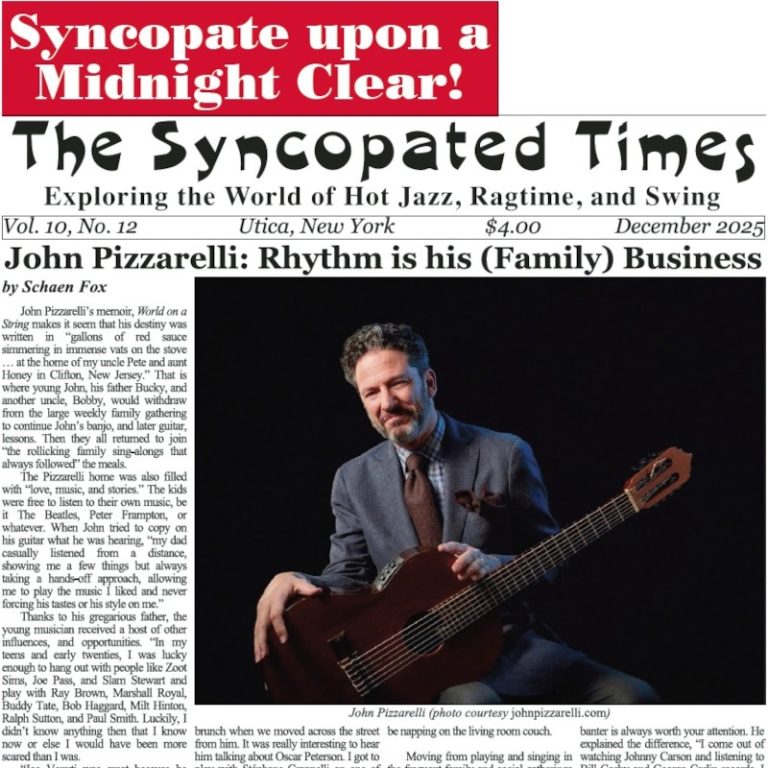In the early 1950s, Bob Wilber (1928-2019) was having a musical identity crisis. He had been a protégé of the masterful Sidney Bechet during 1946-48 when he was virtually the great soprano-saxophonist’s only student. Attracted to early jazz, Wilber for a period sounded like a duplicate of Bechet, particularly on soprano. While the association helped him at first and resulted in some record dates both with and without Bechet, Wilber eventually realized that he would go a lot further and be much more satisfied if he could develop his own musical personality. After working with some slightly more modern musicians, studying with altoist Lee Konitz in 1952, and serving in the military, in 1954 he formed The Six. By then Wilber had temporarily given up the soprano and instead was doubling on clarinet and tenor.
For this unusual group, Wilber reunited with trumpeter Johnny Glasel (who had worked with him in the late 1940s) and sought to play a wide-range of styles and songs. Featuring Porky Cohen (and later Sonny Truitt) on trombone and a rhythm section, the band recorded three albums during 1955-56. While some of their songs have the spirit of New Orleans jazz and the group recorded “Riverboat Shuffle” and “St. James Infirmary,” their music is actually often a lot closer to West Coast cool jazz of the 1950s and small-group swing than to trad jazz. The advanced harmonies of thei
You've read three articles this month! That makes you one of a rare breed, the true jazz fan!
The Syncopated Times is a monthly publication covering traditional jazz, ragtime and swing. We have the best historic content anywhere, and are the only American publication covering artists and bands currently playing Hot Jazz, Vintage Swing, or Ragtime. Our writers are legends themselves, paid to bring you the best coverage possible. Advertising will never be enough to keep these stories coming, we need your SUBSCRIPTION. Get unlimited access for $30 a year or $50 for two.
Not ready to pay for jazz yet? Register a Free Account for two weeks of unlimited access without nags or pop ups.
Already Registered? Log In
If you shouldn't be seeing this because you already logged in try refreshing the page.




